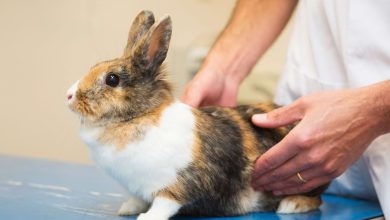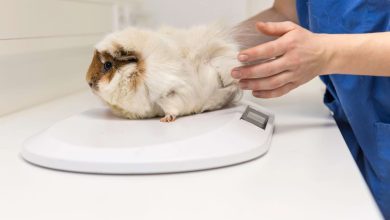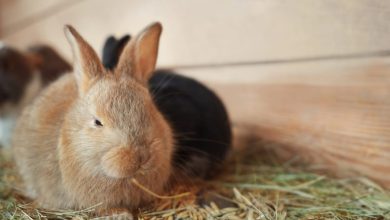9 Yummies Your Mice Will Love
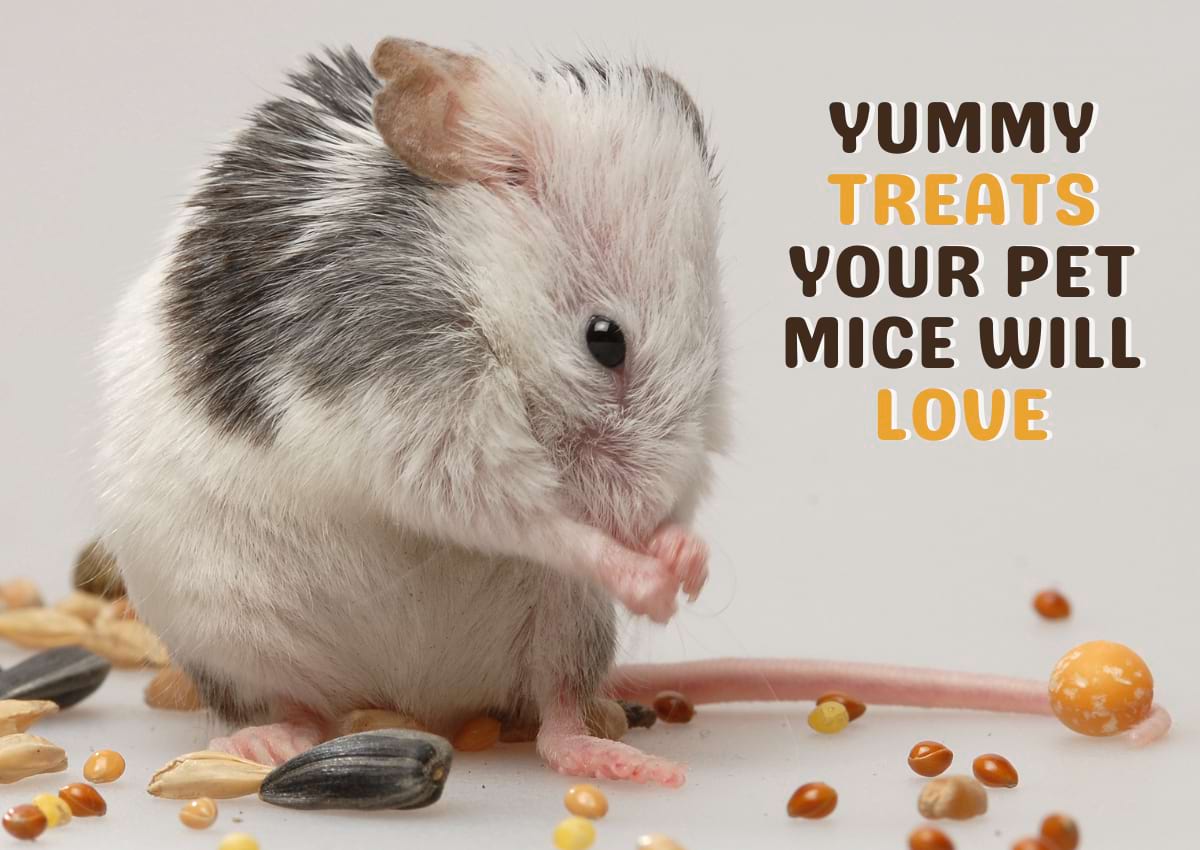
Many of us who own pets like to treat them on occasion. We treat ourselves, and so we want our pets to share in that same delight of ‘something a little bit different’. Anything can be a treat; a resource or experience that is different-in-a-positive-way to normal.
Treats can be any resource at all, but in this article I’ll focus on hand-fed edible treats, as these are what most pet owners start out using, and think of first when they hear the word ‘treat’.
Which Foods Are Treats for Mice?
This question’s very easy – anything at all! Humans tend to think that only foods which would be eaten infrequently or in small amounts are worth labelling as treats, but our pet mice don’t have any of our psychological hang-ups.
Mice love food, and being such fun and active pets, they need to eat a relatively large amount compared to their size each day to remain healthy. Moderation is still key though, as it’s important to ensure that their diet as a whole remains balanced.
But rather than sticking with modern human society’s rigid dichotomous labels of ‘good’ vs ‘bad’ foods, and only calling the ‘naughty’ foods treats, we can instead embrace for our pet mice that variety is the spice of life. Any food that is unexpected or presented differently to the usual main diet is a titbit to enjoy.
How Many Treats Can I Feed My Mice?
This is one of the most common questions asked about mouse treats, which is very valid considering how tiny pet mice are compared to our relatively large and lumbering human size. What can seem like a small bit of food to us can be a substantial meal to them.
With bigger pets (even bigger pet rodents like rats) you don’t need to think about this so much, but it is vitally important with pet mice who have short enough lives as it is. It would be such a shame if their lifespan is further shortened due to too much food, or too much of certain types of food. Diets which are high in refined sugars, processed fats, or salt are just as unhealthy for mice as they are for humans.
However, it’s practically impossible to provide a ‘one size fits all’ answer to this question as there’s too many variables (mice vary greatly in size, how much mice eat each day depends on genetics and environment, treats vary greatly in nutrition etc.). But, here are my top tips for ensuring you don’t go overboard:
- Be conservative when following the recommended amounts for commercial treats. Many list the same feeding guidelines for all small pets – and they are most certainly not all the same size! Remember that most commercially sold treats are done so to make the company money, and not with your pets’ health as first priority; the quicker you go through the pack, the sooner it is you’ll buy a new pack.
- If the treats are large in size (how do they compare to a mouse nose, eye, ear, head), cutting or otherwise breaking them up into multiple smaller pieces and only feeding some is probably more appropriate. It’s also been scientifically proven that receiving multiple small food rewards is more rewarding than receiving just one bigger bit, so win win!
- Try to avoid always giving a certain treat at a certain time of day, as it’s very easy to accidentally end up feeding too much. The routine of this actually makes the edible treat worth less from the mouse’s point of view compared to surprised delight of the unexpected.
- Extra treats should make up under 20% of your mice’s total food intake by weight, with sugary treats less than half of this amount. This ensures that their total diet remains suitable, so you’re not undermining yourself.
- Even bearing the above in mind, it’s rare that we look at the total amount of food we’re feeding our pet mice all at once, rather feeding little bits here and there across the day. Personally I tend to feed my mice their main food in the morning, popping round with treats at some point in the afternoon or evening. It can be useful to mock up the total amount of food you would feed your group of mice on a plate every so often, to check the relative amounts.
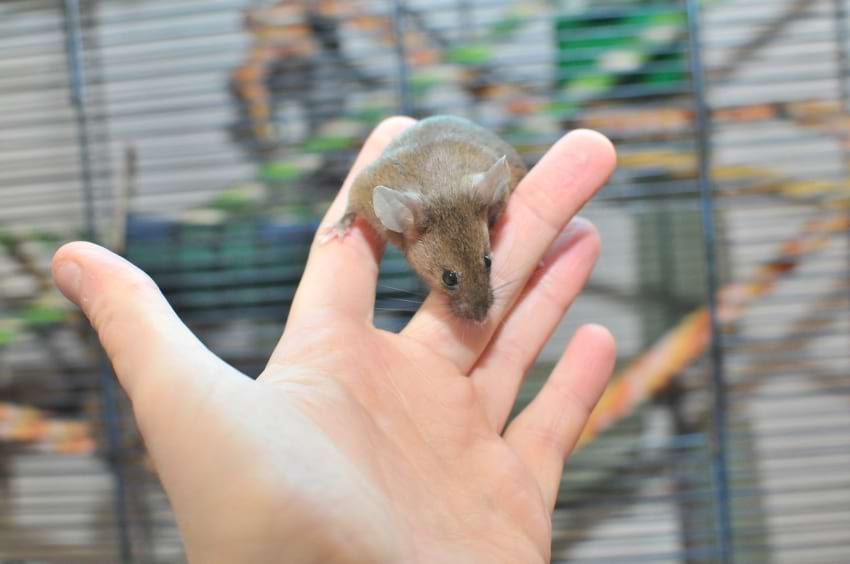
My Favourite Treats to Hand Feed Mice
Wholegrain/ brown bread – The air pocket structure of bread makes it ideal safety offer to mice from your fingers, and mice really love it. I often buy bread with extra seeds or different grains in, which is extra tasty for mice as well as people.
Low sugar breakfast cereals – You need to check the nutritional analysis on the side of the box first, with the aim that per 100g the cereal contains no more than 5g of each of salt and sugar, taking extra care if syrup is used to add sweetness. My favourite breakfast cereals to use as mouse treats are cornflakes, rice puffs, and plain porridge (oatmeal) which has been left to congeal slightly.
Apple, carrot, grape and pepper chunks – Mice can safely eat any fruits and veggies which people can eat, but these are my favourite to hand feed mice. They’re sweeter and have tempting smells for the mice, while still easy for me to safely cut up to an appropriate size.
- Note 1: Many fruits and veggies have a high water content, so try to avoid feeding too much at once. It’s better to spread these fresh foods out across the week.
- Note 2: Some people try and get around this by feeding mostly dried fruit, but remember removing water weight concentrates all the other nutrients, including sugar. A 1cm square of dried banana contains much more sugar than a 1cm square of fresh banana.
Frozen peas and sweetcorn – These are on the larger side of things for mice (so take care with what else you are feeding that day), but are oh so convenient. Best is to feed raw, having defrosted a few in a dish on the side.
Hard boiled egg – Obviously a whole egg is an awful lot of egg even for a big group of mice, but it’s very easy to put aside a smidgen from your own egg to share with them. Most mice will happily nibble on eggshell for the minerals too.
Flakes of cooked chicken (or other meat) – Another high protein treat which smells simply delicious to mousey noses, so a small amount can go a long way.
Dried mealworms – These are a bit like Marmite to pet mice; some scoff a mealworm half into their face as fast as possible, while other mice take the proffered reward, cautiously nibble, go “bleurgh, what’s that?!”, drop into the substrate, and then look at you as if to ask where the real treat is.
Pasta – Both raw and cooked pasta is safe for mice to eat; which do your mice like best? Personally I prefer to feed cooked pasta to my mice, but if you’re doing this it’s best to cook the pasta in plain (unsalted) water. Spaghetti is particularly good for offering uncooked!
Whole hemp seeds – while not as big nor quite as easy to pinch-hold as sunflower seeds, hemp seeds have a much healthier omega oil profile. They can be sold for either humans as a health food, or for pet birds, with both types being suitable for pet mice.
As you can tell from my list of favourite treats, human leftovers (or preferably food put aside partway through cooking, before you go to town on sauces and seasoning) can work really well as mouse treats. This is partly a financial decision, partly one made for mouse health to avoid all that refined sugar, and partly because, assuming you’re eating a relatively balanced diet yourself, it’s very easy to keep variety up. There’s no need to finish a packet of one crinkly packet of treats before you can buy a different sort if your mouse treats don’t come out of a specific packet in the first place!
However this does mean that unless you’re on your guard, you may start to slip with amounts, and shortly, the balanced main diet you’re feeding your mice daily is no longer the majority of what they’re eating each day.

How to Ensure Treats Remain Part of a Balanced Diet
Okay, here’s a big confession: I actually left out the main food I hand feed my mice on a regular basis from the above list. Why? Because the food I hand feed my mice most regularly is their own normal dry mix.
Note: If you’re going to hand feed their normal diet, make sure you portion up the group’s daily ration into a bowl or scoop and hand feed from there, rather than directly from the main storage tub. This ensures that you’re not accidentally making their meant-to-be-balanced food very unbalanced across time.
Food can be made special by changing details about the food itself, as discussed above. But food can also be made special by changing how it’s presented. Think of all those restaurants that serve food on novelty ‘plates’, or even the very act of eating out compared to eating that same meal at home.
For our pet mice, personalised service of being directly handed food by their people instantly makes food more valuable. The treat becomes two-fold; eating tasty food, and also extra direct interaction with the friendly human.
A wheat disc in the cage? “That’s okay, a bit boring as I get them all the time, but tasty enough”. A hand-selected wheat disc your favourite human has specially handed just to you? “Omg so exciting I love it and will eat it immediately!”
